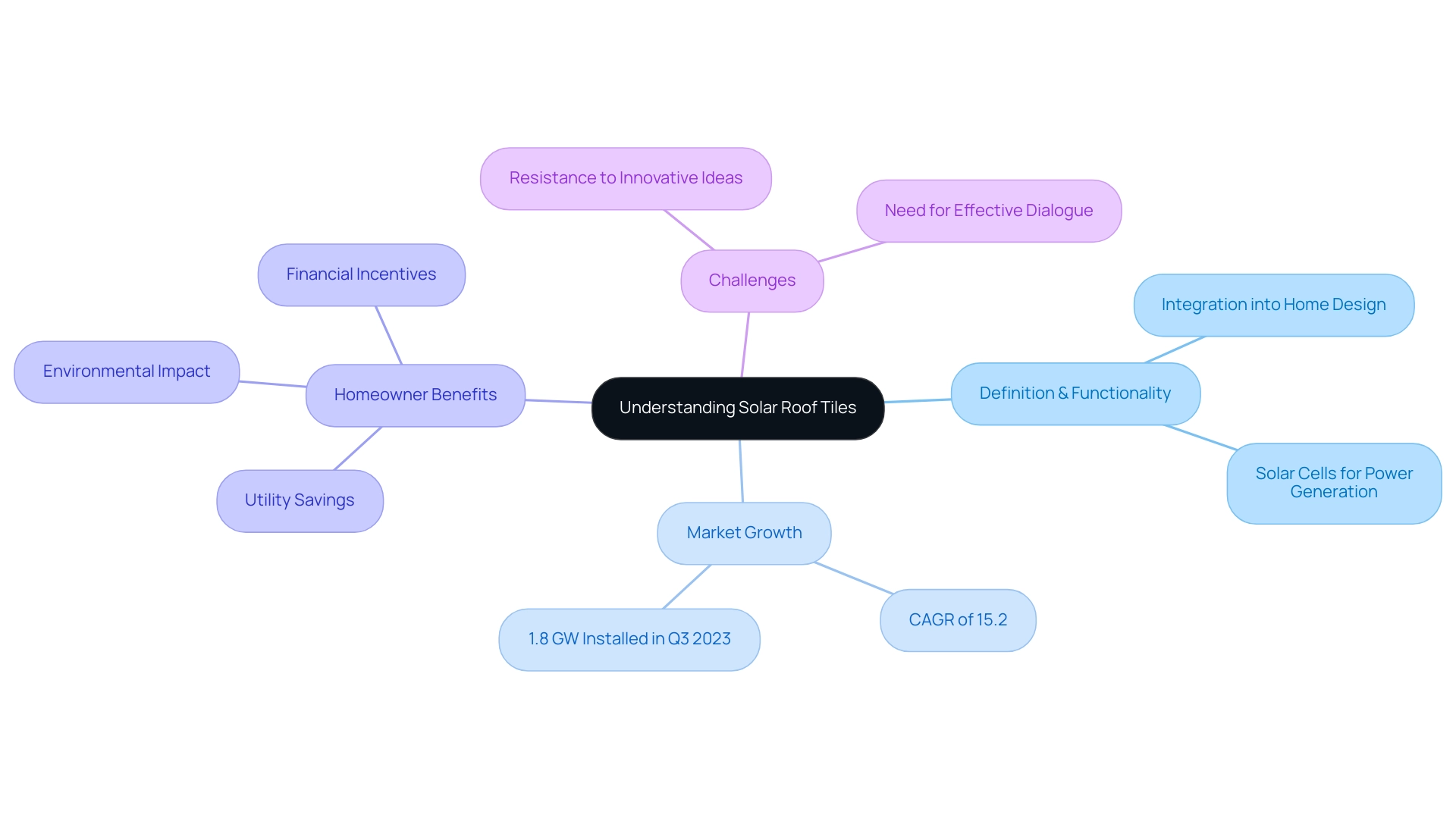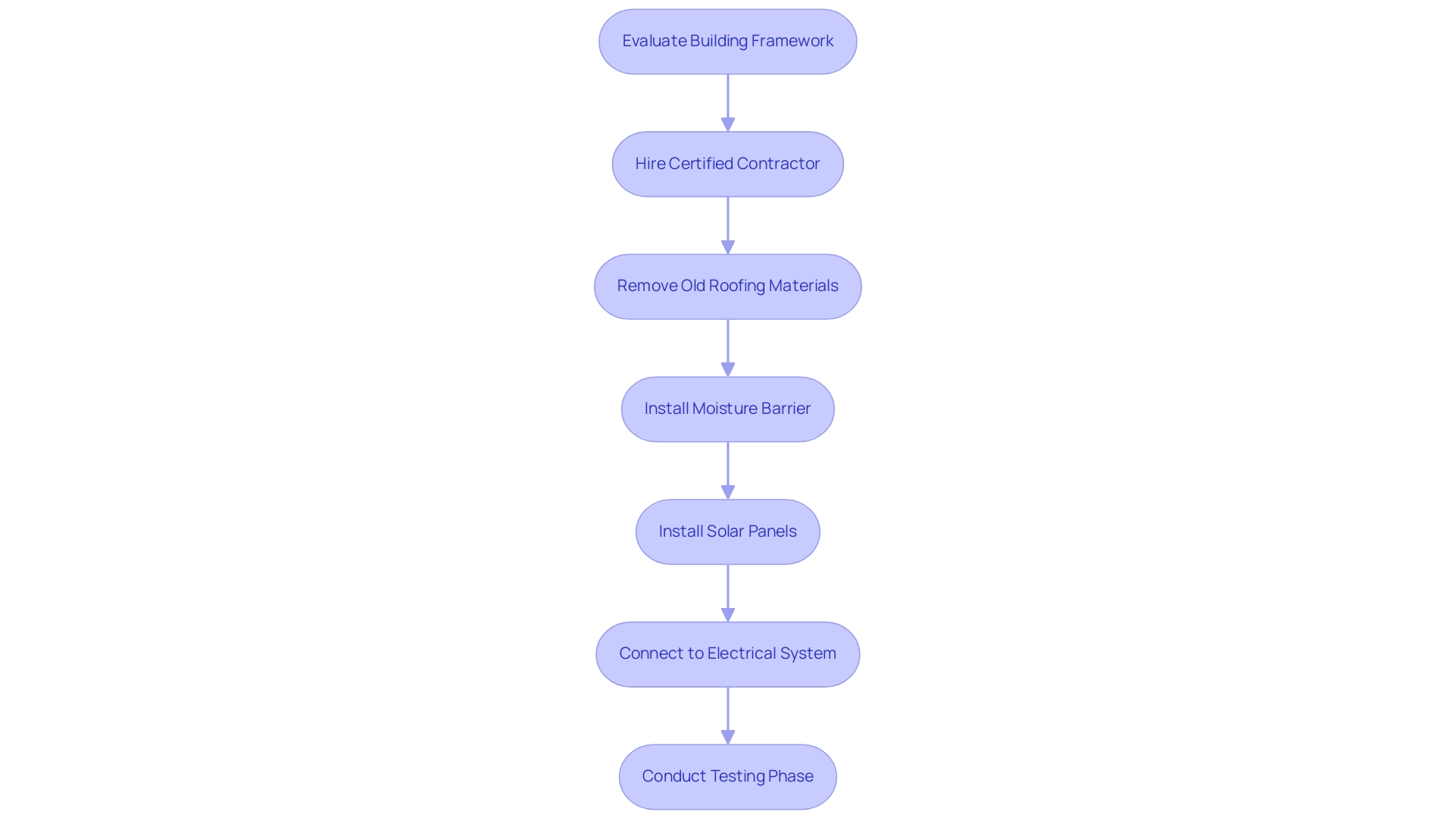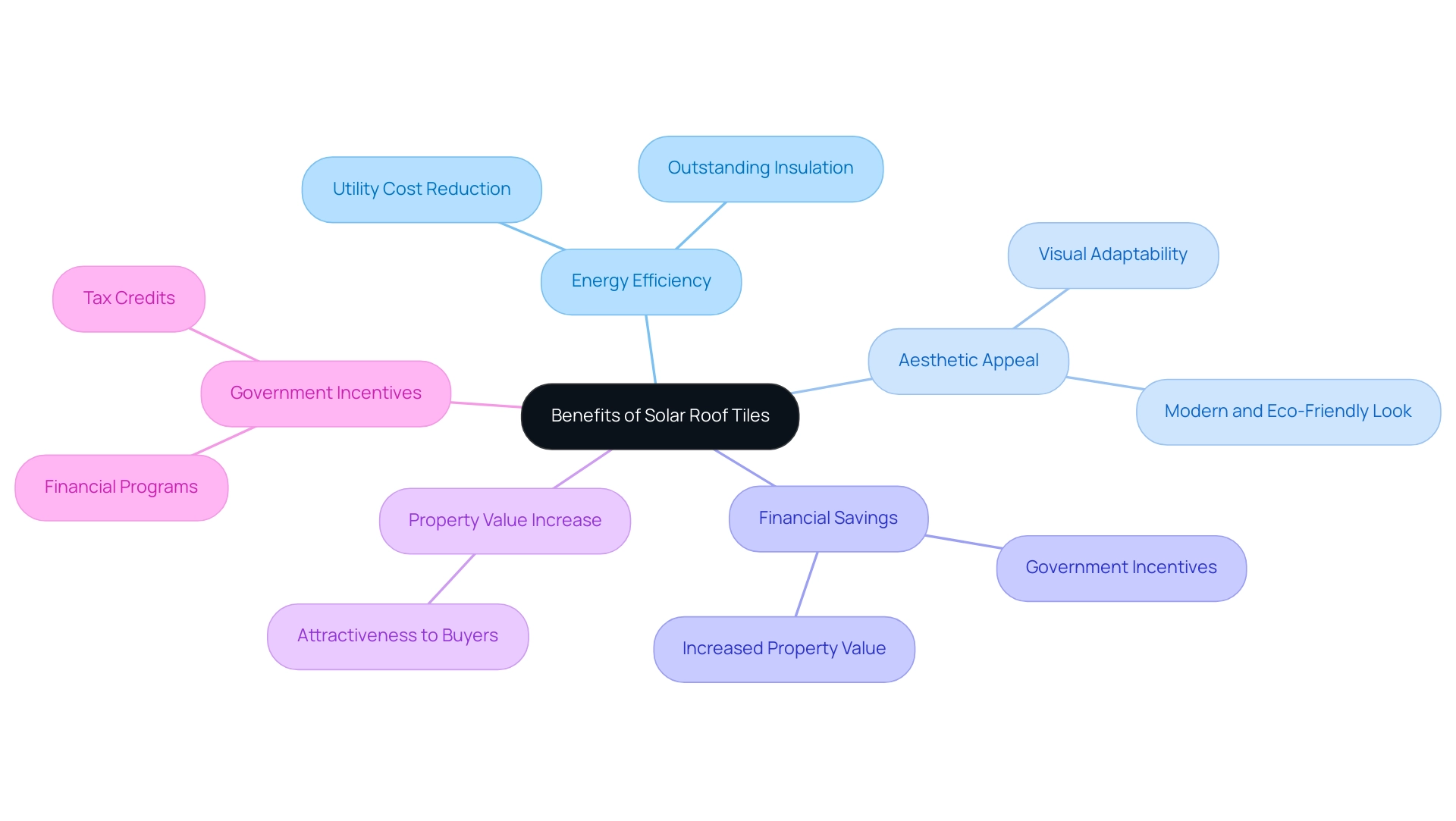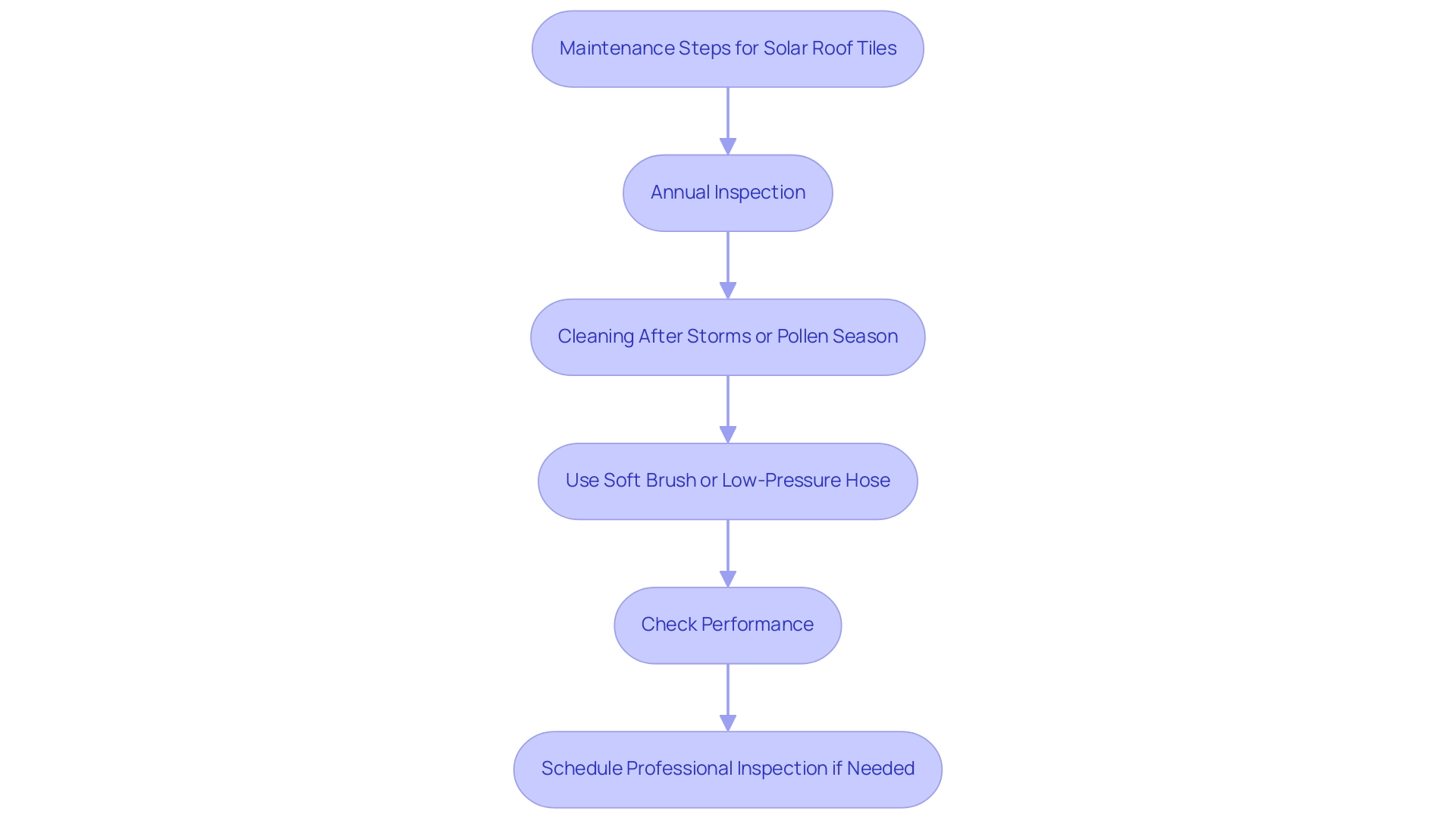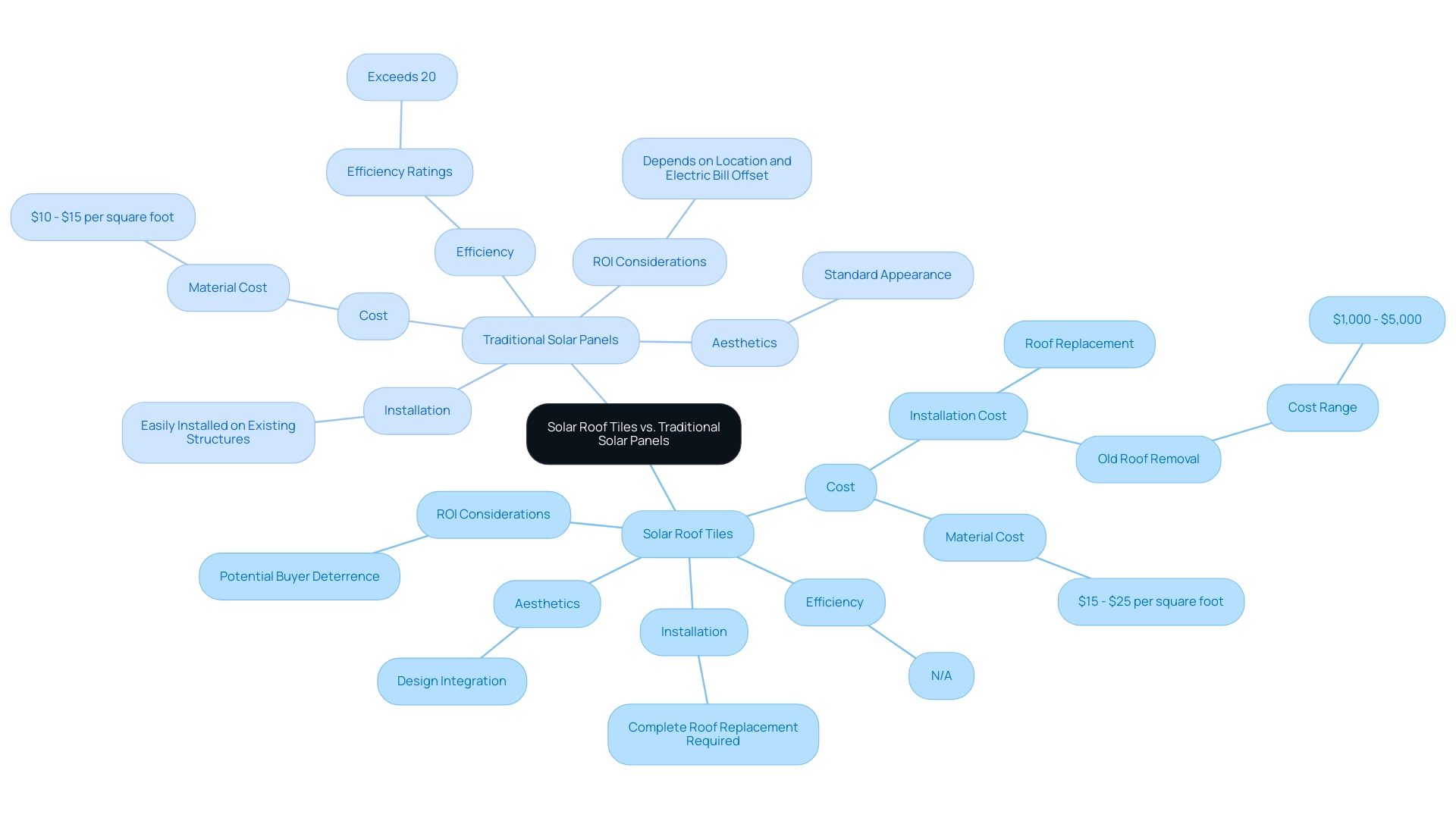Overview
The article provides a comprehensive overview of solar tiles for roofing, detailing their installation process, benefits, maintenance, and a comparison with traditional solar panels. It emphasizes that solar tiles not only enhance a home’s aesthetic appeal and energy efficiency but also represent a growing market trend, supported by rising consumer interest and financial incentives for renewable energy solutions.
Introduction
As homeowners increasingly seek sustainable and efficient energy solutions, solar roof tiles are emerging as a compelling option that marries functionality with aesthetics. Unlike traditional solar panels that can disrupt the visual harmony of a home, these innovative tiles blend seamlessly into existing architecture, providing a sleek and modern look while harnessing the sun’s energy.
With the solar roof tile market projected to grow significantly in the coming years, it’s clear that more homeowners are recognizing the dual benefits of energy savings and enhanced property value.
This article delves into the ins and outs of solar roof tiles, from their installation process to maintenance essentials, while comparing them to traditional solar panels. By exploring these facets, homeowners can make informed decisions about integrating solar technology into their homes, paving the way for a more sustainable future.
Understanding Solar Roof Tiles: Definition and Functionality
Solar tiles for roofing are a cutting-edge covering option that not only safeguards your home but also captures sunlight to produce electricity. In contrast to conventional energy collection panels that rest on your current structure, these solar tiles for roofing are designed to integrate smoothly into your home’s design, providing a neat and appealing look. Every solar tile for roofing is fitted with solar cells that transform sunlight into usable power, showcasing their dual purpose of supplying power while improving your home’s appearance.
This integration is particularly appealing for eco-conscious homeowners. The market for photovoltaic shingles is anticipated to expand at an impressive CAGR of 15.2% from 2024 to 2031, indicating an increasing awareness of the advantages of this technology. In fact, the U.S. residential renewable market reached a significant milestone in Q3 2023, installing 1.8 gigawatts of power across over 210,000 projects, marking a 12% increase from the previous year.
As mentioned by EcoWatch, ‘The incorporation of photovoltaic shingles signifies a major transition towards more sustainable construction methods.’ By investing in renewable energy options such as solar tiles for roofing, homeowners can enjoy considerable savings on utility expenses, reduce their dependence on non-renewable energy sources, and contribute to efforts to decrease greenhouse gas emissions. Furthermore, numerous areas provide financial incentives or rebates for installations of photovoltaic shingles, improving their economic appeal.
Although creative concepts such as photovoltaic shingles may encounter opposition, efficient dialogue and teamwork can assist in addressing these obstacles. As you explore your energy alternatives, photovoltaic shingles not only offer visual advantages but also surpass conventional panels regarding integration and property value improvement, while promoting fair access initiatives in renewable energy.
The Installation Process: How to Properly Install Solar Roof Tiles
Installing photovoltaic shingles can seem overwhelming, but dividing it into manageable steps simplifies the procedure significantly. Begin by evaluating your building’s framework and alignment—this is essential to ascertain if your residence is appropriate for the installation of solar tiles for roofing. Once you’re prepared, it’s prudent to employ a certified contractor who specializes in solar tiles for roofing.
Their expertise ensures that everything is done right, keeping your investment secure. The typical expense of installing photovoltaic shingles is approximately $55,000, so comprehending this investment is essential.
The installation begins with:
- Taking off any old roofing materials, paving the way for a new beginning.
- Placing a layer to shield your home from moisture and offer a stable foundation for the panels.
- Installing the solar panels, starting from the bottom of the roof and working upwards to ensure a tight seal and proper drainage.
- Connecting the tiles to your home’s electrical system, which is where the magic happens!
- Conducting a thorough testing phase to ensure everything is functioning correctly.
Throughout this process, it’s essential to adhere to local building codes and regulations to guarantee safety and compliance. Furthermore, understanding optimal battery choices for power storage, such as Tesla Powerwall, can enhance your system’s efficiency and sustainability.
The Tesla Powerwall, for example, generally costs about $10,500 for installation, which is a significant factor when assessing the overall investment in energy solutions. As Marques Brownlee pointed out, the advantages of smooth integration with Tesla products such as EV chargers and Powerwall batteries can surpass the additional expenses linked to energy-efficient building materials. However, potential buyers should also consider the performance concerns highlighted in case studies regarding Tesla’s Solar Roof, which has not disclosed efficiency ratings.
This lack of transparency complicates the evaluation of its performance compared to traditional photovoltaic panels.
Regular maintenance is vital for ensuring the longevity and efficiency of your roof tiles, especially when incorporating solar tiles for roofing and employing innovative cleaning solutions to keep them functioning at their best. Remember, taking these steps not only enhances the efficiency of your energy system but also gives you peace of mind knowing your home is well-equipped for sustainable energy. Understanding how solar tiles for roofing convert sunlight into electricity through photovoltaic cells can also provide valuable insights into their functionality and efficiency, further supporting your decision to invest in solar technology.
Benefits of Solar Roof Tiles: Energy Efficiency and Aesthetic Appeal
Solar roof panels are not merely a practical investment; they are filled with numerous benefits that can greatly improve your home. By transforming sunlight into power, these panels can result in significant decreases in your utility costs, making them a financially wise option for environmentally aware homeowners. Recent findings suggest that surpluses at midday on non-working days can soar to 2.7 kW, indicating their potential for savings.
While this figure represents only 0.17% of total consumption each year, it underscores the effectiveness of photovoltaic panels in promoting autonomy and financial savings. Beyond energy savings, solar tiles for roofing provide outstanding insulation, further enhancing your home’s energy efficiency.
But let’s discuss aesthetics! One of the prominent attributes of energy panels is their visual adaptability. Available in a variety of styles and colors, they can seamlessly blend with traditional roofing, enhancing your home’s visual appeal.
Homeowners have observed that these materials not only enhance the overall appearance of their residences but also add to a sense of modernity and eco-friendliness. As ZJ Huang aptly states, there’s untapped potential in urban sunlight utilization, and aesthetics play a crucial role in driving domestic demand.
Furthermore, the installation of solar tiles for roofing can increase your property value, making your home more appealing to prospective buyers in the future. Key players like Tesla and GAF Energy are making significant strides in the single market, introducing innovative technologies that enhance both performance and aesthetics. For example, Tesla’s solar tiles for roofing merge effortlessly with current architectural designs while offering strong power generation features.
In addition to these benefits, homeowners should consider government programs that may offer financial incentives for energy installations, making the transition more affordable. Solar battery options also play a crucial role in maximizing energy efficiency, allowing homeowners to store excess energy generated during the day for use during peak hours or at night. As you think about implementing this eco-friendly enhancement, keep in mind that the advantages of renewable energy panels go beyond mere savings—they can turn your home into a more energy-efficient and aesthetically pleasing environment.
Furthermore, grasping the significance of panel cleaning services can aid in preserving the effectiveness of your energy systems, guaranteeing they operate at their peak for years ahead. Recent insights into sunlight energy solutions reinforce the growing trend towards sustainable living and energy efficiency.
Maintenance Essentials: Keeping Your Solar Roof Tiles in Top Condition
Maintaining roof panels is a feasible duty that greatly enhances their durability and effectiveness. Regular maintenance, including annual inspections, is essential for identifying and addressing potential issues with your solar panels. After heavy storms or during pollen season, a thorough cleaning is advisable, as dust, dirt, and debris can hinder performance.
Using a soft brush or a hose with low pressure will help protect the surfaces from damage while ensuring they remain effective. Experts emphasize that routine cleaning can reduce performance declines, which average a median loss rate of 0.75% per year. If you notice a significant drop in energy production, start by cleaning the surface, as this is often the most common cause of performance issues.
If cleaning does not resolve the problem, it may be time to schedule a professional inspection. Additionally, maintaining the space around your top structure free of overhanging branches is a wise action to avoid debris accumulation and safeguard your energy panels.
Interestingly, researchers from the Indian Institute of Engineering Science and Technology have developed a model to estimate dust accumulation on photovoltaic panels, which can help homeowners determine how frequently they should clean their panels based on local conditions.
Remember, taking into account that installation expenses can vary from €500 to €3,000, investing in regular upkeep is essential to protecting your investment in solar tiles for roofing and ensuring your roofing materials function at their best. Routine cleaning and checks not only enhance the overall efficiency of your panels but also support your goal of a more sustainable and environmentally friendly home, as highlighted in case studies demonstrating the effectiveness of preventive care.
Solar Roof Tiles vs. Traditional Solar Panels: A Comparative Analysis
When deciding between photovoltaic shingles and conventional panels, there’s much to take into account. Solar tiles for roofing are designed to integrate smoothly with your home’s design, providing a sleek and appealing appearance while generating power. However, it’s important to note that these tiles usually carry a higher upfront cost, often ranging from $15 to $25 per square foot, compared to traditional solar panels, which typically cost between $10 to $15 per square foot.
On the efficiency front, traditional panels often win out, boasting efficiency ratings that can exceed 20%, which means they might generate more electricity per square foot—something to think about if maximizing energy output is your goal.
The installation process also varies significantly. Traditional panels can be easily installed on an existing structure, making them a convenient option for many homeowners. In contrast, solar tiles for roofing necessitate a complete roof replacement, which can increase the overall project cost by an additional $10,000 to $30,000.
Additionally, the appearance of photovoltaic shingles may deter some buyers, potentially affecting the actual return on investment (ROI). As Samantha Velez, a content editor at Angi, aptly points out,
The actual ROI you’ll see depends on your location, how much of your electric bill you can offset, and the tastes of the buyers in your area.
This insight reminds us that both budget and personal aesthetic preferences play a crucial role in the decision-making process.
Furthermore, it’s essential to consider the costs associated with removing old roofing materials, which can range from $1,000 to $5,000, adding to the overall financial implications of installing roofing shingles. Ultimately, whether you prefer solar tiles for roofing or conventional panels will depend on balancing your financial considerations, design aspirations, and power goals. Moreover, as you explore renewable solutions, don’t overlook the potential of installing an EV charging station at home.
This addition not only supports your eco-friendly lifestyle but can also save you money in the long run by utilizing the power generated from your renewable system. By understanding the costs and benefits of solar energy compared to traditional electricity, homeowners can make informed decisions that optimize both their energy savings and aesthetic preferences.
Conclusion
The exploration of solar roof tiles reveals a compelling blend of functionality and aesthetics that appeals to modern homeowners. As highlighted, these innovative tiles not only generate electricity but also enhance the visual appeal of a home, making them a standout choice for those looking to invest in sustainable living. The growth of the solar roof tile market, along with the increasing installation rates, underscores a significant shift towards eco-friendly energy solutions that offer both economic and environmental benefits.
Understanding the installation process and maintenance essentials is crucial for anyone considering this upgrade. While the initial investment may be higher compared to traditional solar panels, the long-term savings on energy bills and the potential increase in property value make solar roof tiles a worthwhile consideration. Regular care and maintenance can further ensure these tiles perform efficiently, safeguarding the investment over time.
Ultimately, the choice between solar roof tiles and traditional solar panels boils down to personal preferences and financial considerations. While traditional panels may offer higher efficiency at a lower cost, solar roof tiles provide a unique opportunity to harmonize energy production with home design. As more homeowners embrace these sustainable options, the journey towards a greener future becomes not just a possibility, but a reality that enhances both lifestyle and community wellbeing.



